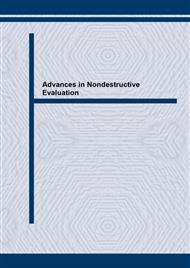[1]
E. Delamarche, H. Schmid, H.A. Biebuyck, B. Michel: Adv. Mater. Vol. 9 (1997), pp.741-746.
Google Scholar
[2]
R. Saha, W. D. Nix: Acta Materialia., Vol. 50 (2002), pp.23-38.
Google Scholar
[3]
Micro resist technology GmbH: Rev.: 01/01.
Google Scholar
[4]
W.C. Oliver and G.M. Pharr: Journal of Materials Research, Vol. 7 (1992), pp.1564-1583.
Google Scholar
[5]
B. J. Briscoe, L. Fiori and E. Pelillo: J. Phys. D: Appl. Phys. Vol. 31 (1998), pp.2395-2405.
Google Scholar
[6]
Manuel Luis B. Palacio, Tracey Scherban, Brad Sun, Jessica Xu, William W. Gerberich: Mat. Res. Soc. Symp. Proc. Vol. 695 (2002), pp.121-126.
Google Scholar
[7]
L. Cheng, L.E. Scriven, W. Gerberich: Mat. Res. Soc. Symp. Proc. Vol. 522 (1998), p.193.
Google Scholar
[8]
K.B. Yoder, S. Ahuja, K.T. Dihn, D.A. Crowson, S.G. Corcoran, L. Cheng, W.W. Gerberich: Mat. Res. Soc. Symp. Proc. Vol. 522 (1998), p.205.
DOI: 10.1557/proc-522-205
Google Scholar


